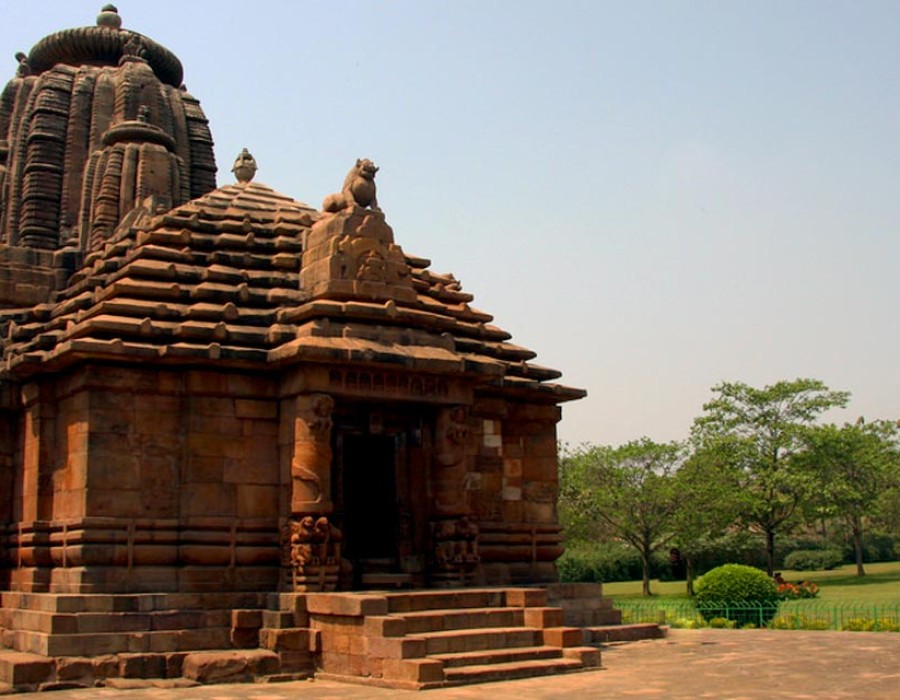Rajarani Temple stands as an epitome of architectural brilliance and historical significance. Known for its intricate carvings and unique sandstone structure, the temple is one of the most iconic landmarks of the region. Though lesser known compared to the famed Lingaraj or Jagannath temples, the Rajarani Temple holds its own with its striking design, religious significance, and rich heritage.
History and Significance of Rajarani Temple
The Rajarani Temple, dating back to the 11th century, is believed to have been built by the Somavamsi dynasty, who ruled Odisha during that period. Its name, Rajarani, comes from the type of sandstone used in its construction—an orange-hued stone called "Rajarani," which is unique to the region. Unlike many temples in Odisha that are dedicated to Lord Shiva, Lord Vishnu, or other deities, the Rajarani Temple remains without a specific idol. Scholars believe that this may have been a place for devotion to multiple deities or a celebration of the divine in general.
The temple’s construction is attributed to the expertise of artisans from the Kalinga architectural tradition, which is renowned for its remarkable stone carvings and sculptures. The Rajarani Temple is a classic example of the Kalinga style, with its towering spires (Shikhara) that rise to a height of over 18 meters, giving the temple an imposing presence in the landscape.
Architectural Excellence
One of the main attractions of the Rajarani Temple is its exquisite architecture, which showcases the true artistry of the builders of ancient Odisha. The temple is built in the traditional Kalinga style, which includes a sanctum (Garbhagriha), an assembly hall (Jagamohan), and a towered spire. What sets this temple apart from other structures in the region is the sheer beauty of its carvings. The sandstone walls of the temple are adorned with intricate sculptures depicting scenes from Hindu mythology, divine figures, and celestial beings.
The wall carvings are especially detailed, featuring gods and goddesses, as well as mythological animals, warriors, and dancers. The grandeur of these carvings creates a mesmerizing visual effect, attracting photographers, historians, and art enthusiasts. These carvings are not just aesthetically pleasing but also serve as a visual narrative of the period’s spiritual and cultural beliefs.
The shikhara, or tower, of the Rajarani Temple, is a notable feature, designed in a style that complements the rest of the temple. The central spire is surrounded by smaller ones, creating a balanced and harmonious structure. The temple’s outer walls are also noteworthy for their smooth finish and symmetrical design, which speak volumes about the precision and skill of the craftsmen who built the temple.
The Enigmatic Absence of an Idol
Unlike most temples in Odisha, the Rajarani Temple does not have a central deity or idol. It remains an enigma for historians and scholars. The absence of an idol has led to various theories, with some suggesting that the temple was never intended to be used for idol worship. It may have been a place for religious rituals, worship of celestial beings, or simply a space for philosophical and spiritual discussions.
The temple’s architecture suggests that it was a significant centre of worship, possibly dedicated to multiple deities, which was common in the temples of that era. The lack of a central idol also allows visitors to focus on the artistry of the temple itself and the spiritual atmosphere it embodies.
Cultural and Religious Importance
The Rajarani Temple holds significant cultural importance in the region. Though no longer in active religious use, it is still visited by pilgrims, historians, and tourists who come to appreciate its beauty and learn about its heritage. The temple’s role in the spiritual landscape of Odisha is more symbolic, serving as a representation of the region’s architectural excellence and devotion to the divine.
The temple is also an important reminder of the historical richness of Odisha, a region that has been home to several ancient dynasties and religious movements. Despite its relatively small scale compared to other temples in Odisha, the Rajarani Temple holds its own as a testament to the region’s religious and architectural history.
Tourism and Visiting Rajarani Temple
The Rajarani Temple is located in the heart of Bhubaneswar, making it easily accessible to tourists. The temple is situated close to other important landmarks such as the Lingaraj Temple and the Mukteswar Temple, making it a part of a significant pilgrimage circuit in the city. Visitors often take the opportunity to explore multiple temples and religious sites in Bhubaneswar in a single trip.
The temple is open to the public year-round, though it is particularly popular during the winter months when the weather is pleasant for outdoor exploration. A visit to the Rajarani Temple can be combined with a visit to other historic sites in Bhubaneswar, including the Odisha State Museum, which showcases the rich culture and history of the region.
While there is no formal dress code for visitors, it is advisable to dress modestly and respect local customs. Photography is allowed, though one must be respectful of the spiritual atmosphere within the temple complex.
Conclusion
The Rajarani Temple in Bhubaneswar is a unique architectural marvel that stands as a reminder of Odisha's rich cultural and religious history. Its stunning carvings, intricate design, and the mystery surrounding its lack of a central deity make it one of the most fascinating temples in the region. For anyone visiting Bhubaneswar, the Rajarani Temple is a must-see destination that offers a deeper understanding of the region's heritage, spiritual significance, and artistic brilliance. Whether you're a history enthusiast, a lover of architecture, or someone looking for a quiet place to reflect, the Rajarani Temple provides a perfect blend of art, culture, and spirituality.





Comments